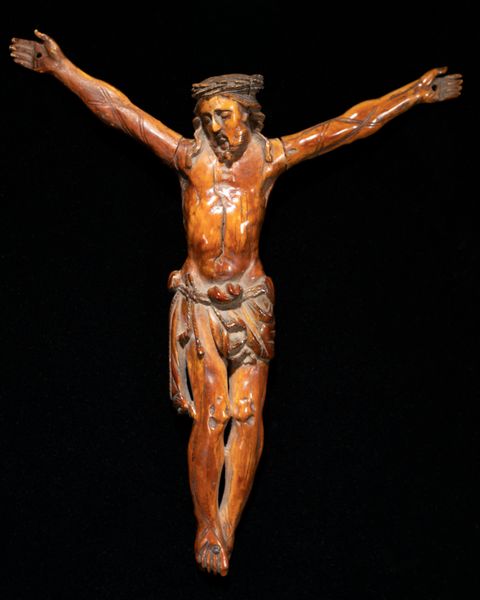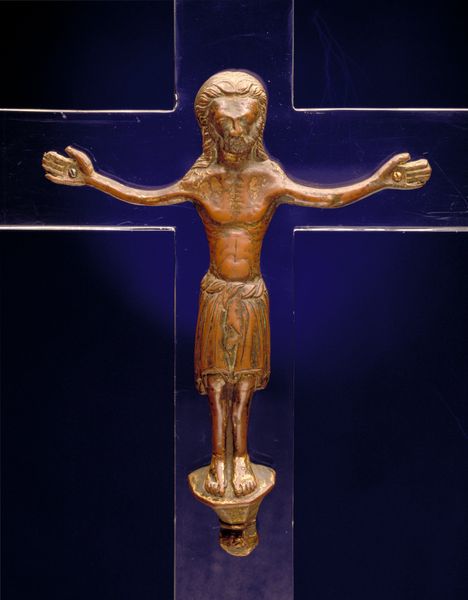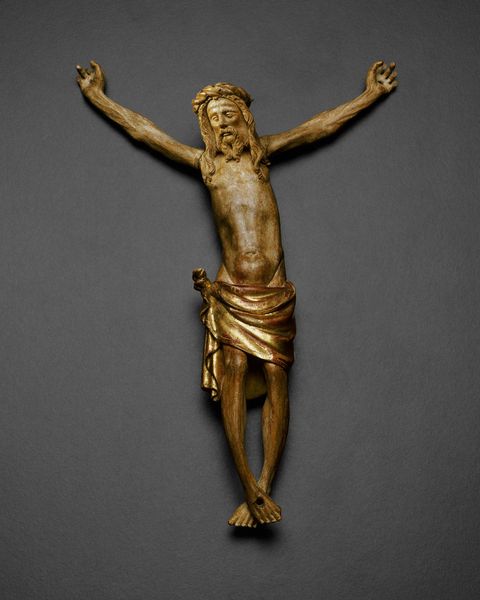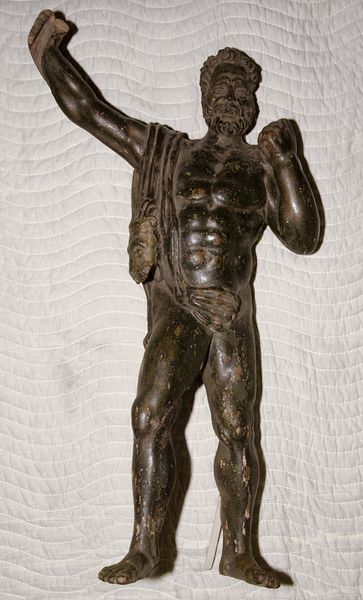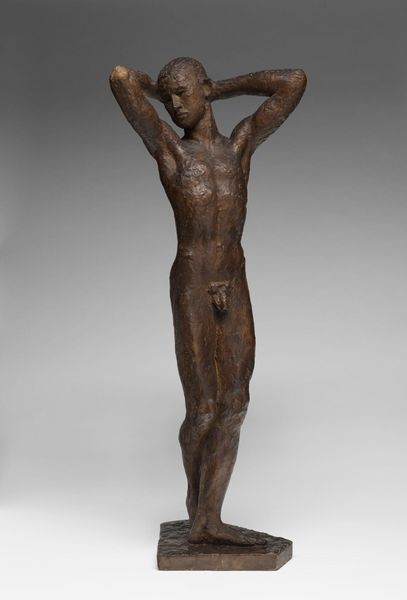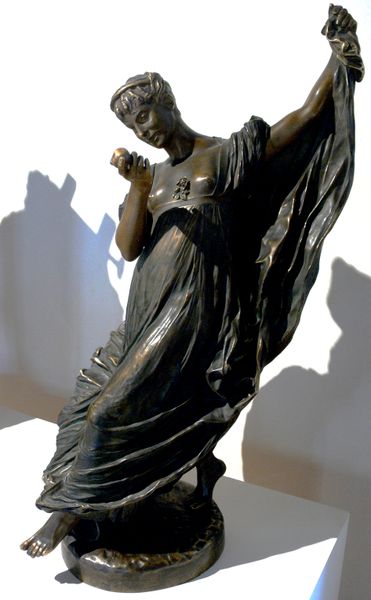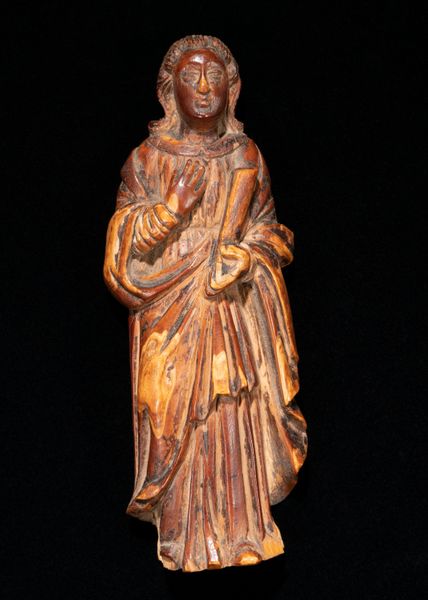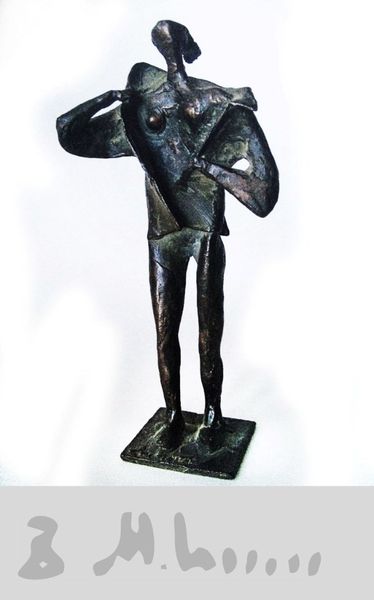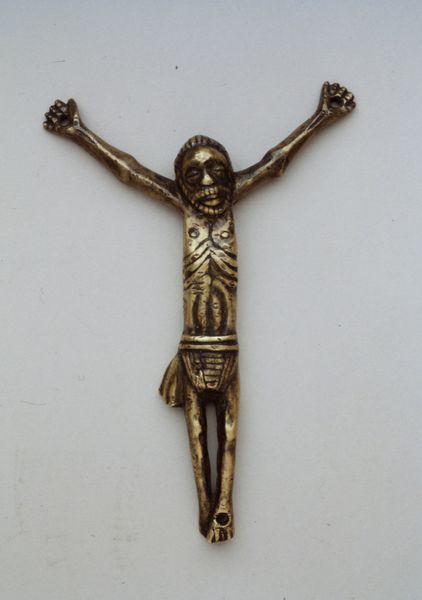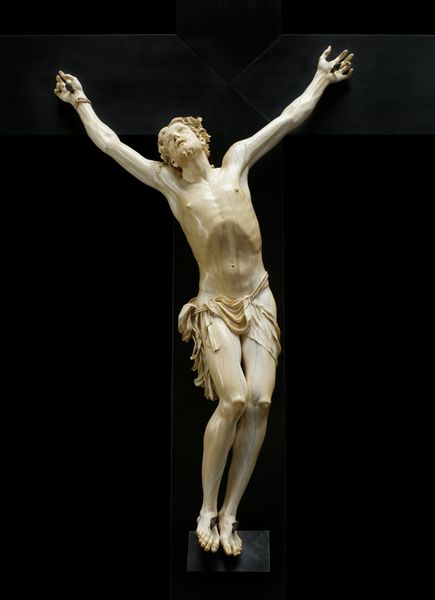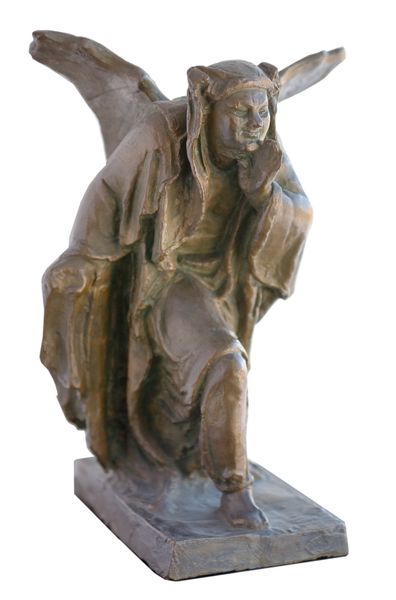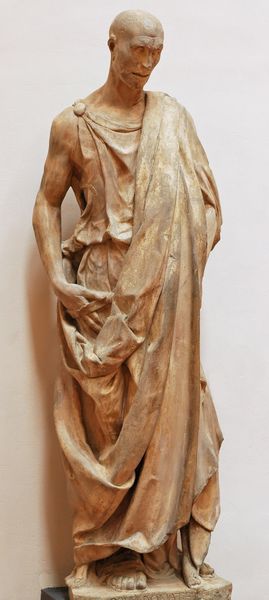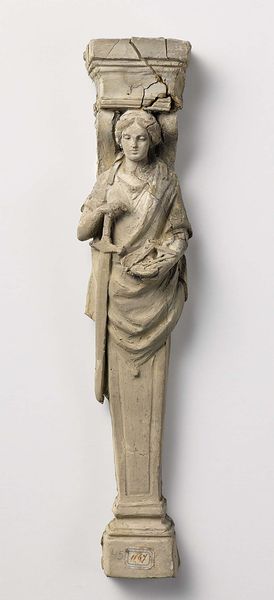
sculpture, ivory
#
baroque
#
figuration
#
sculpture
#
history-painting
#
nude
#
ivory
Dimensions: 6 13/16 × 1 11/16 × 1 in. (17.3 × 4.29 × 2.54 cm)
Copyright: Public Domain
This small crucifix was carved by an anonymous artist, likely in Europe. The choice of wood as a material profoundly shapes our understanding of the sculpture. The anonymous artist would have needed access to specific woodworking tools, such as chisels and gouges, to shape the raw material into the figure of Christ. Look at the anatomical details: the rib cage, the flow of hair, the careful articulation of the drapery. The color, grain, and density of the wood, all dictated the form that the work would take, pushing against the artist’s hand. The process of carving is itself a kind of labor. The artist's skill and physical effort are embedded in every cut and curve, challenging the traditional distinctions between fine art and craft. By focusing on these elements, we gain a deeper appreciation for the cultural significance and the artistic choices made in this powerful object.
Comments
minneapolisinstituteofart almost 2 years ago
⋮
The province of Goa in western India was under Portuguese control from 1512–1961, forming a nexus in trading routes that circumnavigated the earth. Goan craftsman were renowned for their supple modeling of ivory (likely exported from Mozambique) into Christian icons, which feed the appetite for luxury products in Europe, as well as furthered evangelical missions throughout Asia and the Americas. Within the genre of Indo-Portuguese ivories, popular subjects include ‘Christ as the Good Shepard’ (the image of Christ as child would have related to similar bronze statuettes of the God Krishna) and the ‘Virgin of the Immaculate Conception,’ which shows Mary atop a crescent moon, both of which remain ever-present icons in South Asia’s diverse religious landscape.
Join the conversation
Join millions of artists and users on Artera today and experience the ultimate creative platform.
